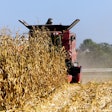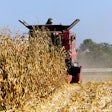
The U.S. Department of Agriculture's latest "America's Farms and Ranches at a Glance" report for 2024 paints a complex picture of the nation's agricultural sector, highlighting the continued dominance of family farms alongside the growing economic influence of larger operations.
Key findings from the report include:
Family farms constitute 96% of all U.S. farms and account for 83% of total agricultural production.
Small family farms, representing 86% of all farms, operate on 41% of U.S. agricultural land but generate only 17% of the total production value.
Large-scale family farms, while fewer in number, produce 48% of the total value of agricultural output and occupy 31% of farmland.
Financial performance varies significantly by farm size, with 52-85% of small family farms operating in the high-risk zone (operating profit margin below 10%), compared to only 29-34% of large and very large farms.
Government support programs show distinct patterns, with small farms receiving 76% of Conservation Reserve Program payments, while larger farms benefit more from countercyclical and working lands program payments.
Precision agriculture adoption is markedly higher among larger farms, with 68% of large-scale crop-producing farms using technologies like yield monitors and soil maps, compared to just 13% of small farms.
Farm household income remains robust, with a median of $97,984, surpassing the national median of $80,610, though 42% of farm households still fall below the national median income.
The report also introduces new data on unpriced stored commodities and delves into the motivations behind precision agriculture adoption. These findings underscore the evolving nature of U.S. agriculture, where small family farms remain numerically dominant but face increasing economic challenges compared to their larger counterparts.
As the sector continues to adapt to technological advancements and changing market conditions, the disparity in financial performance and technology adoption between small and large farms raises important questions about the future structure of American agriculture and the potential need for targeted policies to support smaller operations.
















